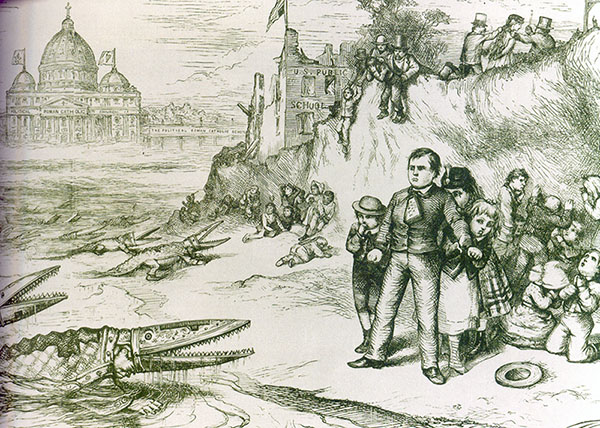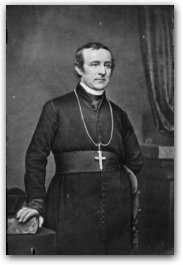Among the stories recently published in the dailies about past transit strikes, I saw none about the brief strike by motor-men employed by the privately owned Brooklyn Rapid Transit Company (BRT) in November 1918. It led directly to the Malbone Street wreck, in which a strikebreaker lost control of a Brighton Beach train during the evening rush on the grade down Crown Heights between Park Place and a tunnel under Flatbush Avenue at Malbone Street, killing 93 people. Eighty-four years later, it remains the worst disaster in the history of New York’s subway system.
Formerly the Brooklyn, Flatbush and Coney Island Railroad, the Brighton Beach line dated from the 1870s. It had been one of several lightly built steam railroads linking the city of Brooklyn with its seaside resorts. In 1913, the BRT controlled the line, now electrified, along with streetcar and elevated lines throughout Kings County.
Throughout 1918, the last year of the Great War, tensions between the BRT and the Brotherhood of Locomotive Engineers had escalated. At least twenty-nine motormen had been fired for membership in the union. The Brotherhood had filed a grievance with the National War Labor Board, a federal review panel created to strengthen the war effort by improving labor-management relations. In late October, the Board had recommended that the BRT rehire the men with back pay, but the Board had no power of enforcement, and the BRT declined to even meet with the union’s delegation. A strike was called for 5 a.m. on Friday, November 1, 1918.
The walkout staggered the BRT. Supervisors and clerks with little or no training as motormen filled empty cabs. Among the strikebreakers was Edward Luciano, a young clerk working under the assumed name of Billy Lewis to blunt anti-Italian prejudice. He had been with the BRT for two years, recording crew assignments. Earlier in 1918, he had received two hours of classroom instruction to become a motorman. In the fall, he had spent two days riding with regular motormen as practical experience in train operations.
This—as Brian Cudahy notes in The Malbone Street Wreck—fell far short of the BRT’s usual sixty hours of training, ninety-question exam, sixty hours of apprenticeship aboard regular trains, as well as a physical examination and further testing and certification. After all this, a motorman would spend weeks taking empty trains on practice runs in and around yards and terminals before being allowed to operate a train carrying passengers.
At 5 a.m. on November 1, Luciano began his usual eleven-and-a-half-hour tour of duty. When it ended at 4:30 p.m., his superiors offered him a $20 bonus and a post-strike raise to pilot a rush-hour train from Kings Highway to Manhattan and back to Brooklyn over the Brighton Beach line to Coney Island. (“A man has to earn a living,” he later explained to a reporter from The New York Times.)
At trial, William Brody, a BRT trainmaster, testified that Thomas Blewitt, a BRT superintendent responsible for certifying motormen, had represented Luciano as properly qualified. Cudahy speculates that as men with similar “qualifications” had taken trains over the line all day, Brody and Blewitt felt they could take a chance with Luciano. At the yard, he was given a train, four of whose five cars were at least thirty years old, each car with a steel underframe and a wooden body and roof.
At 6:08 p.m., Luciano’s train arrived at Park Row terminal, a great vaulted train shed that stood at the Manhattan end of the Brooklyn Bridge, between the Municipal Building and the golden-domed tower that Joseph Pulitzer had built for the New York World.
At 6:14 p.m., Luciano began his return trip to Brighton Beach. Charles Darling, a lawyer riding in the first car, later said the train moved with starts and stops and sped a curve at Sands Street, the first station in Brooklyn. The train then rumbled onto the Fulton Street elevated line. Walter H. Simonson, a civil engineer, recalled that the car was jammed to near standing-room only.
At 6:29 p.m., Luciano departed Grand Avenue for the junction at Franklin Avenue. The switch there was wrongly set, keeping the train on the Fulton Avenue line toward East New York, rather than turning it southward toward Brighton Beach. After some delay, the train was properly routed onto the Brighton Beach line at 6:38 p.m. Two minutes later, Luciano left Park Place station.
Crown Heights is a land form as well as a neighborhood. Between Park Place, at the crest of the Heights, and Prospect Park, the station at the foot of the hill, the track dropped seventy feet over a distance of less than a mile. By now, Luciano was probably frazzled. His conductor signaled a stop at the next station, Consumers’ Park, but Luciano rushed through without stopping. Simonson felt the train accelerate, as if to make up for lost time. Now the next stop was Prospect Park, just the other side of Flatbush Avenue.
Making trains move is relatively easy. Stopping them is less so. Braking a subway train safely and smoothly, to halt it in proper alignment with a station platform so passengers may depart and board, is an art. Train brakes operate with compressed air. By maximizing air pressure in a train’s main brake line, a motorman releases the brakes—that is, he permits the air to push the brake shoes from the wheels so the train can move.
When a motorman wants to slow a train, he applies the brakes by reducing the air pressure, permitting the brake shoes to make contact with the wheels. Air brakes take time to apply and to take effect; thus a train may travel hundreds of feet while stopping. A motorman who knows from training and experience how his train will respond to a particular uphill or downhill grade can gauge when to begin braking. Luciano had no such experience. He had never run a train over the Brighton Beach line—or anywhere else before that day.
At the foot of the hill, the line curved sharply, entering a short tunnel beneath the intersection of Flatbush Avenue and Malbone Street. The speed limit for this curve was six miles an hour. Luciano later testified he was going thirty. However, he also testified that the air brakes had failed, after which he had applied the emergency brakes and thrown the train into reverse. Investigators from both the New York State Public Service Commission and the BRT found when examining the wreckage that the brakes had not failed, the emergency brakes had never been applied and the motors were never reversed. The New York Times quoted a naval officer who had survived the wreck as estimating the train’s speed as fully 70 mph when it left the track.
It was 6:42 p.m. when Luciano reached Malbone Street. The control car, No. 726, roared into the curve and derailed, ripping up the third rail in a burst of blue sparks. The second car, No. 80, and the third, No. 100, also jumped the tracks, smashing into the wall with a crash heard nearly a mile away.
No. 726 skidded along the roadbed into the tunnel, its front and rear corners crashing into the tunnel wall, windows fragmenting in shards upon screaming passengers. The two following cars had swung wider. No. 80 struck the edge of the tunnel’s mouth and ripped along its inner wall, where steel girders strong enough to support the tunnel roof and Flatbush Avenue above it protruded from the concrete surface. These tore into the car’s roof and left side, disintegrating it in a burst of wood, steel, glass and flesh.
Back in No. 100, Walter Simonson felt the car rising beneath him. It tilted to the left, squarely striking the concrete pier at the opening of the tunnel. In the moment before the lights went out, Simonson saw the left side of the car fragment and its benches shatter, their riders crushed and impaled on splintering car timbers. He saw other passengers beheaded by the tunnel girders and the car’s roof crumple into the car, all as quickly as that. Centrifugal force threw straphangers against stone and steel. Simonson himself was flung against a stump of No. 100’s left side, which kept him from flying into the tunnel.
Then the train stopped. Ten seconds had passed. It was still 6:42 p.m.
The two last cars had not derailed. Car No. 100, however, was mere fragments of wood and broken and twisted bits of iron and steel. It had been fifty feet long going into the tunnel. Now its wreckage was compressed into a space of forty feet. From beneath part of its roof, Simonson squeezed free and staggered down toward the open cut in the darkness.
Up at the front of the train, Car No. 726, too, was largely intact. Charles Darling watched as Luciano emerged unscathed from the cab. (The power had shorted out when No. 746 tore up the third rail.) The lawyer asked what had happened. “I don’t know,” Luciano replied. “I lost control of the damn thing. That’s all.” Then he stepped from the car and walked up the track to Prospect Park station. A newsboy, waiting there for the train, had heard the crash, the silence and the screams. A minute or so later, he saw a man walk out of the tunnel from the middle of the tracks—presumably Luciano, who got home between 8 and 9 p.m., probably by trolley.
The first rescuers to arrive on the scene found the tunnel jammed with debris “so tightly…that no crevice or opening was left,” reported The New York Times. With lanterns at hand, they began removing wreckage piece by piece. Cops and firemen set about removing the wounded from the tangle of steel, glass and splintered wood, “which stuck out like bayonets in all directions, some of them having already pierced those in the cars.” Those who could walk staggered from the tunnel. Others had to be carried out. Cradles of burlap were made for the recovered bodies, which were hoisted by the rescuers to the street and laid out in rows before being taken to the morgue.
Automobiles were commandeered and their headlights shone on the wreckage. Brooklyn Gas Company and Brooklyn Edison Company also sent gangs of men with searchlights to illuminate the site. Down in the tunnel, surgeons were working by lantern light, side-by-side with priests administering last rites. Ebbets Field was opened as an aid station for the least seriously injured passengers. Some 200 others were taken to local hospitals.
Luciano and five BRT officials were indicted for manslaughter. Before the trial began, however, the BRT’s lawyers obtained a change of venue from Brooklyn to Nassau County. Mysteriously, although the prosecution knew that Luciano had perjured himself by lying that he had applied the brakes, they never used the evidence. All cases ended in hung juries, acquittals and dismissals.
In December, the BRT went into receivership. This delayed the payment of any claims for over three years. Eventually, the company paid damages totaling $1.6 million. In 1923, the BRT was reorganized as the Brooklyn-Manhattan Transit Corporation—the BMT. It, too, went into receivership and then dissolved itself on November 1, 1941, the 23rd anniversary of the wreck.
After his 1919 acquittal, Luciano moved and entered the real estate business. Then he vanished.
After the wreck, even the name of Malbone Street was tainted. It was eventually changed to Empire Boulevard.
A trace of the BRT may survive endures in the letters “TRB,” under which The New Republic, once published in New York, runs its weekly opening editorial. Legend has it that an editor at the magazine, Bruce Bliven, under pressure from the composing room to invent a byline for a new column, simply reversed the initials of the subway he had ridden into the city.
New York Press, December 31, 2002

